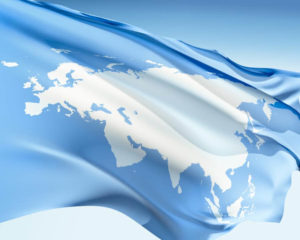The Enclave-Specific Vulnerability of Kaliningrad
In: Liuhto K. (ed.) Kaliningrad 2020: its future competitiveness and role in the Baltic Sea economic region, Pan-European Institute, Turku, 56-74.
Kaliningrad has been swinging up and down on the Russian mountains from its birth as an exclave in 1991. The region is detached from the mainland Russia and geographically included in the European Union while remaining under the Russian sovereignty. The Kaliningrad’s position makes it vulnerable. The region is exposed to continuous shocks caused both by the changes in the Russian politics and in the EU-Russian relations. The paper analyses the problem of Kaliningrad’s political and economic vulnerability mainly from the viewpoint of the theory of enclaves and exclaves, in particular in the framework of the mainland-enclave-surrounding state triangle. The principal questions are on the nature of Kaliningrad’s vulnerability, its sources and the ways to deal with it. In the beginning, let us define the terms used throughout the paper to avoid ambiguity. Enclave is a part of the territory of a state that is enclosed within the territory of another state. Conversely, an exclave is an isolated part of a state that is surrounded by the territory of another state or states. An exclave can possess access to sea. It can also be surrounded by more than one state. The decisive criterion is its separation from the respective mainland. It is crucial to understand that any enclave is simultaneously an exclave, but not every exclave is an enclave as it can be surrounded by more than one state as Nakhichevan or Kaliningrad are. For the state that surrounds an enclave/exclave, the term ‘surrounding state’ will be normally used. The state of which an enclave/exclave makes a part of is called a ‘mainland state’. For those enclaves that are entirely enclosed within the surrounding state, the term ‘true enclave’ is utilized. In contrast, a semi-enclave is a part of a state enclosed within the land territory of another state, yet in possession of a sea border (that is, not fully surrounded). The enclaves of this type are also called ‘coastal enclaves’ both to distinguish them from true enclaves and to incorporate the availability of sea access (see Vinokurov 2004b for more details). There exist at least 283 enclaves and exclaves in the world, of which 256 are true enclaves. Is the term ‘exclave’ necessary since we already have the term ‘enclave’? I believe it is for the following reasons. First of all, it corresponds to the notion of exclavity, stressing the region’s detachness, in contrast to the notion of enclavity that concerns the region’s embeddedness in the surrounding state. Therefore, it is useful for understanding the nature of the enclave in the triangle mainland state – enclave – surrounding state. Second, there are socalled ‘mere exclaves’. Mere exclaves are such regions that, while being isolated from their mainland, are surrounded by more than one state. Thus, they are not enclaves in relation to other states but merely exclaves in relation to the mainland. The enclave-specific problems stemming from embeddedness in a single state can be lacking in such cases (although not necessarily) but the exclave issues caused by the isolation from the respective mainlands remain. An interesting case in this respect is Kaliningrad.
